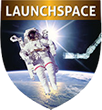Course Details
Course Summary
This professional course covers basic orbital mechanics and includes an introduction to the physics of cislunar space, including the Lagrange stability points around the earth and moon. The course also includes historical information about the development of classical orbital mechanics and modern astrodynamics. Two-body and three-body orbital dynamics will be discussed, especially as they apply to cislunar missions. In addition to classical propulsive maneuvers based on chemical rockets, electrical propulsion will be introduced as well, to include a discussion of optimal steering control laws for continuous-thrust space transfers. Recent examples of electric space propulsion will be provided, including science missions to the moon and asteroids.
Course Materials
Classroom presentation notes, glossary of terms, and useful formulas
Who Should Attend
This course is designed for spacecraft engineers, program managers, and other professionals who wish to enhance their knowledge of orbital mechanics in order to better understand and appreciate the complexities of satellite motion and space mission design. It is intended to familiarize the attendee with a selection of advanced concepts in astrodynamics.
What You Will Learn
Definitions and equations for the classical orbital elements, the two-body problem, the three-body problem and basic gravity perturbations. Historical information about the development of astrodynamics and the Apollo lunar missions. Mission planning concepts for three-body transfers, including cislunar space transfers. Concepts for the optimization of electric propulsion for space maneuvers.
Course Outline
- Introduction and History of Orbital Mechanics
- Definitions and Terminology
- A Brief History of Orbital Mechanics
- The Two-Body Problem and Types of Orbits
- Classical Orbit Parameters
- Classical Equations of Motion
- Orbit Determination
- Basic Concepts and Definitions
- Types of Observations
- Lagrange Time of Flight Equation
- The Lambert Problem and Solutions
- Gravity Perturbations
- Basic Concepts and Definitions
- Types of Gravity Perturbations
- Precession and Sun-Synchronous Orbits
- Station-Keeping Requirements and Satellite Lifetimes
- Three-Body Orbital Dynamics
- Basic Concepts and Definitions
- The Restricted Three-Body Problem
- Lagrange Stability Points
- Halo Orbits in Rotating Frames
- Continuous Low-Thrust Propulsion
- Basic Concepts and Definitions
- Non-Chemical Propulsion Technologies
- Mathematical Solutions for Steering Control Laws
- Recent Examples of Electric Propulsion Missions
- Cislunar Mission Planning
- Basic Concepts and Definitions
- A Brief History of the Apollo Missions
- Matching boundary conditions in rotating frames
- Historical missions to various Lagrange points
- Appendix
- Glossary of Terms
- Useful Equations
- References
Instructor
Dr. James D. Thorne (Jim) is a leading expert on astrodynamics at a national security research center. He is a career veteran of the US Air Force during which time he focused on space technology, acquisition and policy. He has conducted analyses of space-related program concepts and also does independent research in the field of orbital mechanics. Jim published a time-explicit power series solution to a classical orbit determination problem, known in the literature as “Thorne’s solution of the Lambert problem” and has also published basic research in continuous-thrust trajectory optimization. He holds a BS from Purdue University and MS & PhD degrees from the AF Institute of Technology, all in Astronautical Engineering. Jim is a member of the American Astronautical Society and the American Institute of Aeronautics and Astronautics, and is a frequent reviewer of technical journal articles in the field of astrodynamics.
